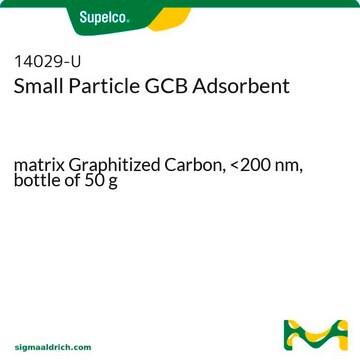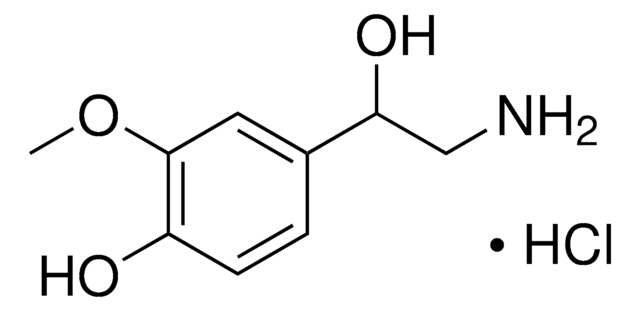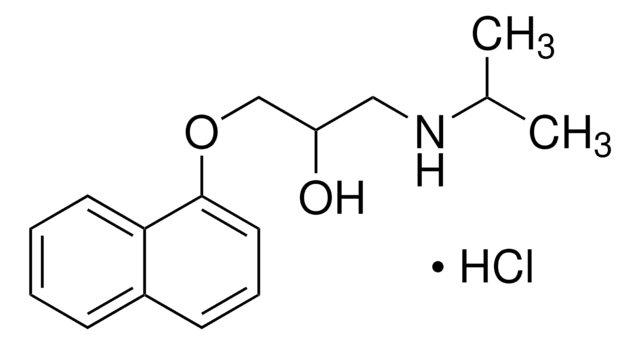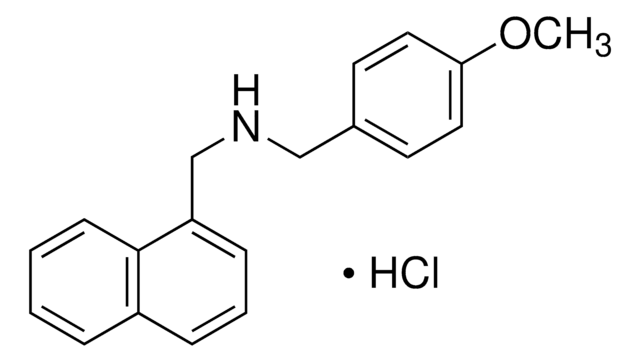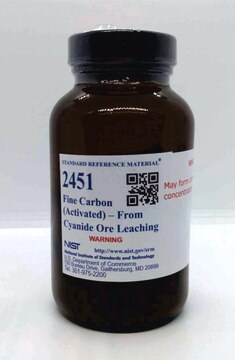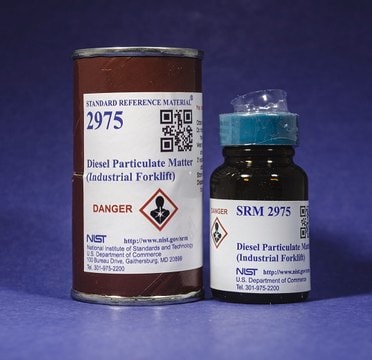699624
Carbon, mesoporous
nanopowder, graphitized, less than 250 ppm Al, Ti, Fe, Ni, Cu, and Zn combined
Synonym(s):
Graphite nanoparticles, Graphitized carbon, Graphitized carbon black
About This Item
Recommended Products
Quality Level
form
nanopowder
surface area
50-100 m2/g
pore size
0.25 cm3/g pore volume (typical)
137 Å average pore diameter (typical)
bp
4827 °C
mp
3654-3697 °C
density
1.828 g/cm3 (absolute, typical)
bulk density
0.075 g/cm3
SMILES string
[C]
InChI
1S/C
Looking for similar products? Visit Product Comparison Guide
1 of 4
This Item | N7127 | P0884 | SML0190 |
|---|---|---|---|
| form powder | form powder | form powder | form powder |
| Quality Level 100 | Quality Level 200 | Quality Level 200 | Quality Level 100 |
| storage temp. 2-8°C | storage temp. - | storage temp. 2-8°C | storage temp. 2-8°C |
| solubility H2O: 12 mg/mL (clear solution) | solubility H2O: 50 mg/mL | solubility ethanol: 10 mg/mL, DMSO: <14.5 mg/mL, H2O: 50 mg/mL, 45% (w/v) aq 2-hydroxypropyl-β-cyclodextrin: 8.0 mg/mL | solubility DMSO: ≥10 mg/mL |
| storage condition desiccated | storage condition - | storage condition - | storage condition desiccated |
General description
Application
Storage Class Code
11 - Combustible Solids
WGK
nwg
Flash Point(F)
Not applicable
Flash Point(C)
Not applicable
Personal Protective Equipment
Choose from one of the most recent versions:
Already Own This Product?
Find documentation for the products that you have recently purchased in the Document Library.
Customers Also Viewed
morphology and loss of barrier function in human
bronchial epithelium at noncytotoxic doses
Articles
Mesoporous Materials include a range of high surface area porous silicates with applications in gas adsorption, drug delivery, diagnostics and catalysis.
Mesoporous materials are formed by a self-assembly process from combined solutions of sol-gel precursors (e.g., metal alkoxides) and structure-directing amphiphiles, usually block-copolymers or surfactants.
Recent demand for electric and hybrid vehicles, coupled with a reduction in prices, has caused lithium-ion batteries (LIBs) to become an increasingly popular form of rechargeable battery technology.
Discover more about advancements being made to improve energy density of lithium ion battery materials.
Our team of scientists has experience in all areas of research including Life Science, Material Science, Chemical Synthesis, Chromatography, Analytical and many others.
Contact Technical Service


